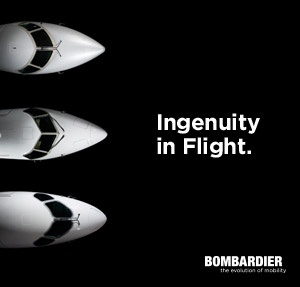navAero lands major Class 2 EFB contract with Norwegian Air Shuttle
March 13, 2009

SUNDSVALL, SWEDEN, March 12, 2009 — navAero announced today that the tñBag™C22 Electronic Flight Bag system has been selected by Norwegian Air Shuttle for fleet-wide deployment on the airline’s B737-NG series aircrafts.
The contracted program includes cross-connected dual tñBag C22 EFB systems with the navAero tñPad™ 2000 display. The systems will also feature the newly commercialized navAero-designed, UMTS/HSDPA – 3G cellular modem module for on-ground data transfer, ARINC 429 connectivity and custom software that enables the utilization of airport moving map applications on a Class 2 EFB.
“After a thorough evaluation, we have concluded that no competing Class 2 EFB system available on the market with an EASA approved STC provides such flexibility, high performance and technical content at such an affordable price as the navAero tñBag C22 EFB,” stated Ole Christian Melhus, EFB project manager & deputy director of flight operations, Norwegian Air Shuttle ASA. “We are very pleased to be one of the first airlines in Europe to receive an operational approval for use of a Class 2 EFB system in all phases of flight. This is in line with our long term strategic IT development process in optimizing and assuring operational control within our expanding operation.”
The navAero contract covers a fleet wide deployment of Norwegian’s currently operating 40 B737 aircraft, with an option of an additional 42 B737-NG aircraft currently on order. The deployment of the navAero EFB platform has already begun and will be completed during 2009.
“This contract is a major breakthrough where we have shown that our tñBag C22 Electronic Flight Bag system is not only suitable for the retrofit market, but is also a future-proof platform that provides an appropriate, effective and high-tech environment for new production aircraft,” said Knut Aabo, navAero vice president of sales & marketing. “We are very happy to continue to provide our European customers with a cost reducing, environmental friendly and safety enhancing state-of-the art EFB platform.”
About Norwegian Air Shuttle ASA
Norwegian Air Shuttle ASA is a low-fare, point-to-point airline, registered on the Oslo Stock Exchange, employing approx. 1400 people. In 2008 Norwegian Air Shuttle AS transported 9.1 million passengers. The company’s headquarters are located at Fornebu, outside Oslo.
About navAero
navAero, Inc. is the world leader in developing and commercializing cost effective electronic flight bag products.
Cirrus Aircraft CEO Wouters on CNBC Squawk Box and Closing Bell* Today
March 13, 2009
Continuing to advocate on behalf of general aviation and Cirrus Aircraft, President and CEO Brent Wouters appeared twice today on CNBC. Host Jane Wells, live and standing beside the latest Cirrus Aircraft SR22 at Van Nuys Airport in Southern California, introduced Brent and covered a range of topics facing the industry. Visit the website to view the CNBC segment.
While the challenges in today’s “corporate jet” market and job concerns in general aviation are currently mainstream media topics, Wouters noted Cirrus Aircraft’s proactive moves to deal with diminishing demand. Recognizing the weakening landscape early on, Cirrus Aircraft initiated structural changes starting in mid-2008 to preserve key company assets and to rationalize production capacity. Those moves, combined with a strong financial partner and ownership group, Arcapita, and a very competitive product lineup, have Cirrus well-positioned through the downturn to ensure future growth and stability.
The current Cirrus Aircraft SR piston product lineup is ideally suited to small and medium sized business seeking a cost-effective, efficient and competitive travel advantage. Cirrus calls its emphasis on the new reality of using its airplanes for greater productivity Flying 2.0.
Final Piece of NASA’s Next-Generation Rocket Heads to Launch Site
March 13, 2009
PROMONTORY, Utah, March 13 /PRNewswire-USNewswire/ — The final pieces of the Ares I-X flight test rocket left the Alliant Tech Systems manufacturing facility in Promontory, Utah, Thursday and began a 2,917-mile journey to its launch site at NASA’s Kennedy Space Center in Florida.
The first stage motor segments are the last shipment of Ares I-X major hardware elements. The hardware will arrive in Florida later this month and undergo final processing and preparations before being stacked with the other portions of the rocket.
“This shipment means great things for the Ares I-X mission,” said Ares I-X Deputy Mission Manager, Steve Davis. “It’s wonderful to see the next generation of American spaceflight continue to take shape. The excitement is really building now as we start stacking the pieces and preparing for launch later this year.”
The Ares I-X will be the first flight test for the Ares I rocket; the agency’s next-generation spacecraft and crew launch vehicle system. The flight will provide NASA an early opportunity to test and prove hardware, analysis models, facilities and ground operations associated with Ares I.
The Ares I-X rocket is a combination of existing and simulator hardware that will resemble the Ares I rocket in size, shape and weight. It will provide valuable data to guide the final design of the Ares I. The test flight also will bring NASA one step closer to its goals of returning to the moon, and traveling to destinations beyond. The Ares I-X launch is scheduled later in 2009.
The Ares I-X first stage uses a four-segment solid rocket motor, capable of generating 3.3 million pounds of thrust. The motor provides the primary propulsion for the vehicle from liftoff to stage separation 120 seconds into the flight. The motor segments were taken from the existing space shuttle solid rocket booster inventory for the flight test. The booster used for the Ares I-X flight test is being modified to meet Ares needs by adding new forward structures and a fifth segment simulator to better replicate the size and shape of the Ares I crew launch vehicle.
NASA’s Marshall Space Flight Center in Huntsville, Ala., manages the first stage project for the Ares I-X mission, located at NASA’s Johnson Space Center in Houston.
Copa Airlines has applied for authority to expand its service to Bolivia
March 12, 2009
Panama’s “model airline” (and the one with the highest net operating margin in the world) has applied to the Bolivian government to begin service between Panama and Santa Cruz, Bolivia.
Mexicana to serve China during the second half of the year?
March 12, 2009
Manuel Borja Chico, CEO of the Mexican airline – while not confirming the new service – stated that it is likely to occur in the second half of the year. The airline has expanded its long haul service to Europe and Brazil. The new service to London and Madrid was launched in January and February and its first nonstop to Sao Paulo was launched at the end of 2008.
LAN Airlines reports system traffic growth at 8.2% in February
March 12, 2009
The Chilean-based “model airline” had a good performance in February. While system traffic grew at 8.2% in February on a capacity increase of 9.7%, the system load factor dropped 1.2 points to (still profitable) 80%. Domestic passenger traffic rose 31.1% in Argentina, Chile and Peru. International traffic remained unchanged in February with capacity growing 1.2% reducing the load factor to (also profitable) 80.9%.
Delta to begin non stop service between Atlanta and Brasilia on December 17
March 12, 2009
Delta will inaugurate three-time weekly non stop B757-200ER service between Atlanta and Brasilia on December 17. Delta will be the only US carrier to fly nonstop to Brazil’s capital city increasing to six the number of cities served by Delta in Brazil. While Delta has announced cutbacks in the fall, it continues to look at Latin America and the Caribbean as growth markets.
The Aeromexico-Mexicana merger back on the table
March 12, 2009
The Mexican SCT (Secretary of Communications and Transportation) has recommended that the two legacy carriers need to look for mechanisms to survive the global crisis – including the possibility of a merger. According to separate statements by Aeromexico’s CEO Andres Conesa, and Manuel Boja Chico CEO of Mexicana, they confirmed both airlines are looking at the possibility of a merger or some kind of alliance which will reduce both airlines’ operating and financial costs. Obviously the CFC (The Federal Commission on Competition) – which denied Mexicana’s attempt to acquire Aeromexico – is more likely to approve the merger according to sources in Mexico.
ALTA reports January traffic better than expected-up 5.8%
March 12, 2009
The Latin American and Caribbean Air Transport Association (ALTA) reports that its 39 member airlines carried 10.6 million passengers in January for an increase of 5.8%. While Alex de Gunten, ALTA’s executive director, said in the report, “The Latin American and Caribbean region experienced higher than expected growth in January 2009. While US and European traffic was weak, domestic and intra-Latin American passenger growth was strong.” Domestic traffic with 6.9 million passengers was up 8.6%, Intra-Latin American traffic with 2.1 million passengers was up 5.0%. North America, which was to be expected, was down 3.5% while Europe was up 0.8%. Asia-Pacific passengers were down 7.0%. Overall, RPKs were up 3.2% on ASM growth of 4% bringing the total load factor down by 0.5% to 73.1%.
Soloy Celebrates 40th with Delivery and STC
March 12, 2009
OLYMPIA, WASH.: Soloy Aviation Solutions is celebrating 40 years of aviation design innovation with a landmark turbine engine delivery and a third-party STC enhancement for one of its many proven products.
Soloy shipped its 97thHoneywell LTS101 engine conversion for the AS350 to Heliswiss this week. Soloy worked alongside Honeywell to certify the Honeywell LTS101-600A3-A engine installation into the AS350BA and the Honeywell LTS101-700D-2 for installation into the AS350B2, leading to significant operating and maintenance cost reductions compared to the factory installed engine.
Additionally, Flint Aero Inc.’s Extended Wing Tip Fuel Tanks received European Aviation Safety Agency approval in February for the Soloy Cessna 206 Mark I. The tanks allow Soloy Mark I operators to extend their range by carrying an additional 30 gallons of useable fuel. Operators upgrading the aircraft with Flint Tip Tanks will increase the aircraft’s gross weight and useful weight allowance by 200 lbs and 170 lbs respectively.
“In addition to offering extended range capability, this EASA certification is of particular value to our European customers looking to increase their maximum gross weight,” explains Cris Henry, Soloy Fixed Wing Marketing Director. “For instance, skydive clubs operating the Soloy Mark I will gain about 170 lbs of useful load with the Flint Tanks, something they’ve been requesting for quite some time.”
Flint Aero Extended Wing Tip Fuel Tanks, manufactured by Flint Aero Inc. of El Cajon, Calif., received approval for the Soloy Mark I on Feb. 3, 2009. Customers can contact Soloy for information regarding price and availability.
A Historical Tradition
For four decades, Soloy pioneered affordable turbine transitions for piston aircraft, along the way carving a unique niche of high quality design engineering and certification services.
Incorporated in 1969, Soloy was founded on the idea of bringing turbine engine technology to older piston powered aircraft at an affordable price. Today it continues that tradition with cost saving innovations in both the rotorcraft and fixed wing industries.
Initially, the company began converting piston-powered Hiller helicopters with turbine engines. In April 1975, the first Soloy Conversion, the Hiller UH12E4T was born – then later the Soloy Hiller UH12E. Soloy engineered, manufactured, certified and installed these turbine conversions into more than 170 piston-powered Hiller helicopters over the next 10 years, many of which are still in operation.
A few years later Soloy duplicated its earlier conversion successes with the Bell 47 helicopter. Over 140 Bell 47 conversions were installed by operators and continue to support helicopter operations today.
In the 1980s, Soloy expanded its conversion capabilities to light piston-powered fixed wing aircraft such as the Cessna 206 and 207 aircraft utilizing the unique Soloy Turbine Pac. In addition to operating for several individuals and companies, these aircraft, available in wheeled and float configurations, operate around the globe for such organizations as the U.S. Drug Enforcement Agency (DEA), Royal Canadian Mounted Police (RCMP), and the Costa Rica Ministry of Public Security Air Section. In addition to these certified products Soloy also has developed many airframe modifications and at least 13 POC (Proof of Concept) aircraft conversions.
The Tradition Continues
In the rotorcraft industry, Soloy recently began delivering Honeywell LTS101 engines to AS350 operators seeking to reduce operating and maintenance costs.
In the fixed-wing realm, Soloy developed and certified the turbine powered Mark II last year, a turbine conversion for the popular Cessna 206H that delivers a quantum leap in performance, reliability and efficiency.
To learn more about how Soloy’s turbine conversions can help your company increase reliability, enhance performance and save money, visit us online atwww.soloy.com.







